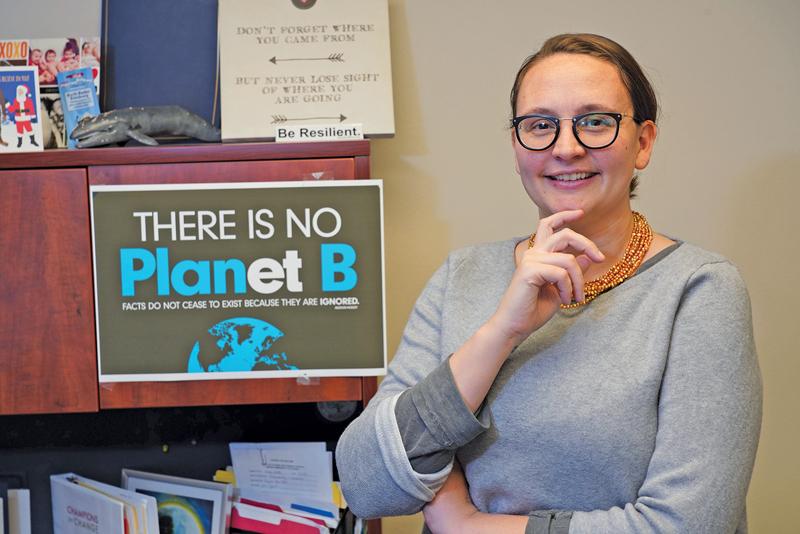The A2Zero plan passed unanimously–but only after nixing language that amounted to calling for effectively ending single-family zoning. The plan had envisioned allowing “by right” construction of four-plexes and accessory dwelling units (ADUs) anywhere in the city. An amendment by Ward Two rep Kathy Griswold’s amendment replaced that with a vague goal to “increase housing opportunities.”
Griswold says the amendment was based on notes from Missy Stults, the city’s sustainability and innovations manager. “It was really a communications problem,” Griswold says. “Some of us felt there was inflammatory language. I was just trying to get to yes, because everyone on council supported the goals.”
Increasing housing density is a key part of the plan, according to Stults, because land use is a major factor in greenhouse gas emissions and the issue came up repeatedly in public engagement sessions. But Stults says Griswold’s change caused “no heartburn.” The plan still envisions reducing commuting by building more multifamily units.
A2Zero has specific emissions reductions targets and estimated price tags spelled out in detail, but it’s more of a road map with some uncharted territory than an agenda set in stone. Many parts of A2Zero count on actions the city doesn’t control.
Most notably, more than a third of projected emissions savings are tied to “community choice aggregation”—which requires state legislation deregulating utilities. That’s unlikely in the near term and strongly opposed by DTE—a key partner in A2Zero, particularly in the planned solar array at the former city landfill.
Stults says she could embrace “other solutions” that may emerge in a different energy marketplace—but only if they force utility customers to “opt out” of renewable utilities. Because DTE’s current alternative-energy plan, “My Green Power,” requires customers to opt in, she says it won’t produce enough switch-overs to meet the 2030 goal.
Also flexible, as it must be, is A2Zero’s vision for powering all city buildings, all new construction, and 30 percent of existing homes through renewable energy sources by 2030. That would require a massive switch from natural gas to electricity, which is currently much more expensive in Michigan. The city hopes to do what it can, including launching public-private bulk-buying programs for energy-efficient items, to make it more affordable for homeowners to get renewable energy replacements when an old water heater or other appliance needs to be replaced. Such steps would nudge the market to be ready for a change to renewables and help make it easier for consumers to do the right thing by making energy-efficient replacements more appealing. It’s akin to how you get kids to floss their teeth—at least, that’s the analogy that comes to mind for Stults, the mother of a five-year-old.
The plan also calls for purchasing more than $9 million in “carbon offsets.” But “we’re not interested,” Stults says, in the cheap offsets that are now available in the still-developing carbon trading market. The plan spells out that the city would invest only in new, more expensive projects that actually replace fossil fuels.
A2Zero was the result of a council mandate when it declared a climate emergency last November. Stults says her staff originally wanted a more realistic “carbon neutral” target date of 2035, but the city council insisted on 2030. Ann Arbor and Washtenaw County are among ninety-four local government units in the United States and one of 1,500 places in thirty countries worldwide–collectively overseeing 820 million people–to declare a climate emergency.
One thing the city won’t commit to is taking on animal agriculture and dietary choices. Though consumption of meat and dairy is a major contributor to global warming, the ninety-two-page A2Zero plan devotes only one page to efforts to “support a plant-rich diet.”


